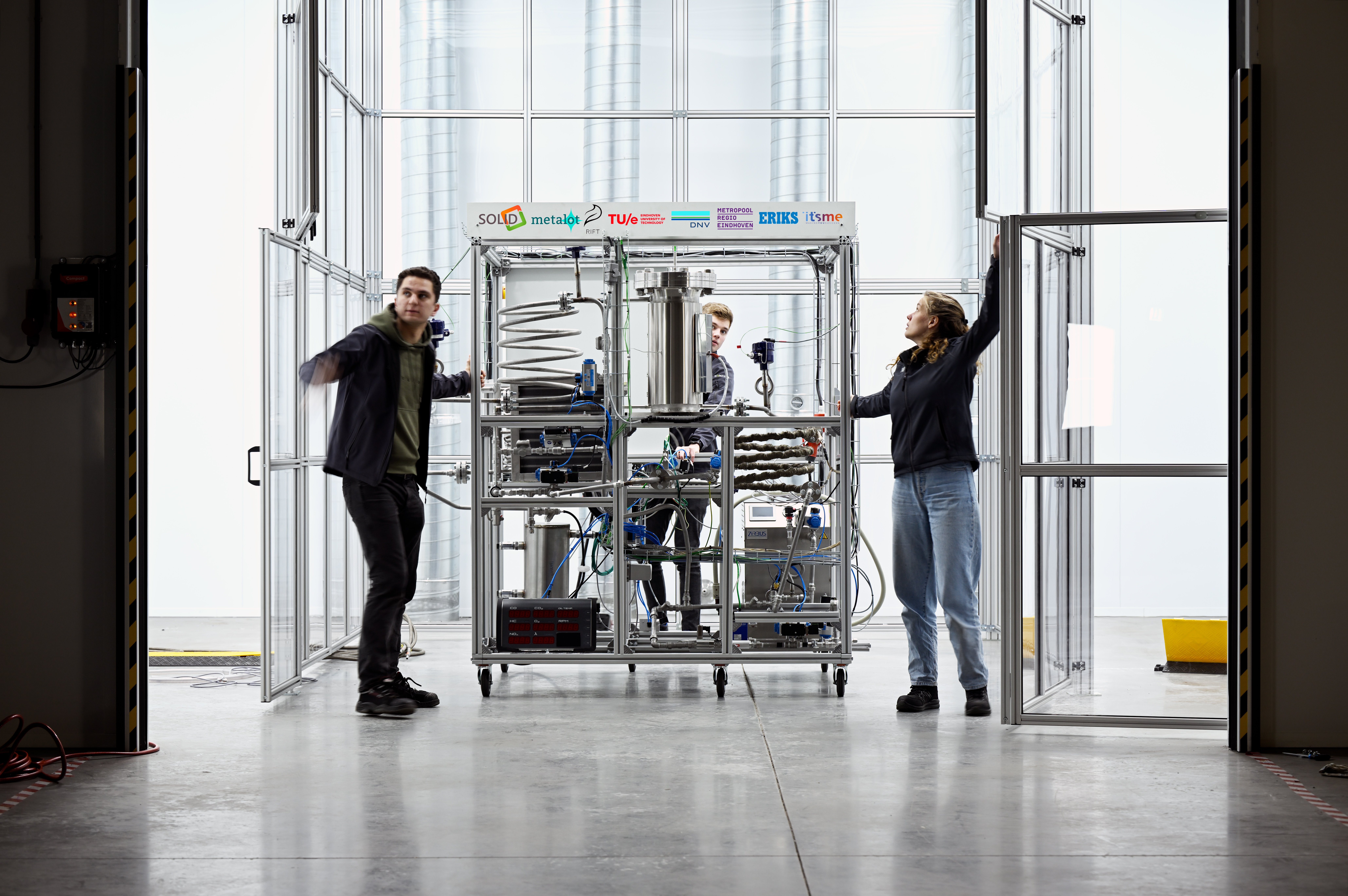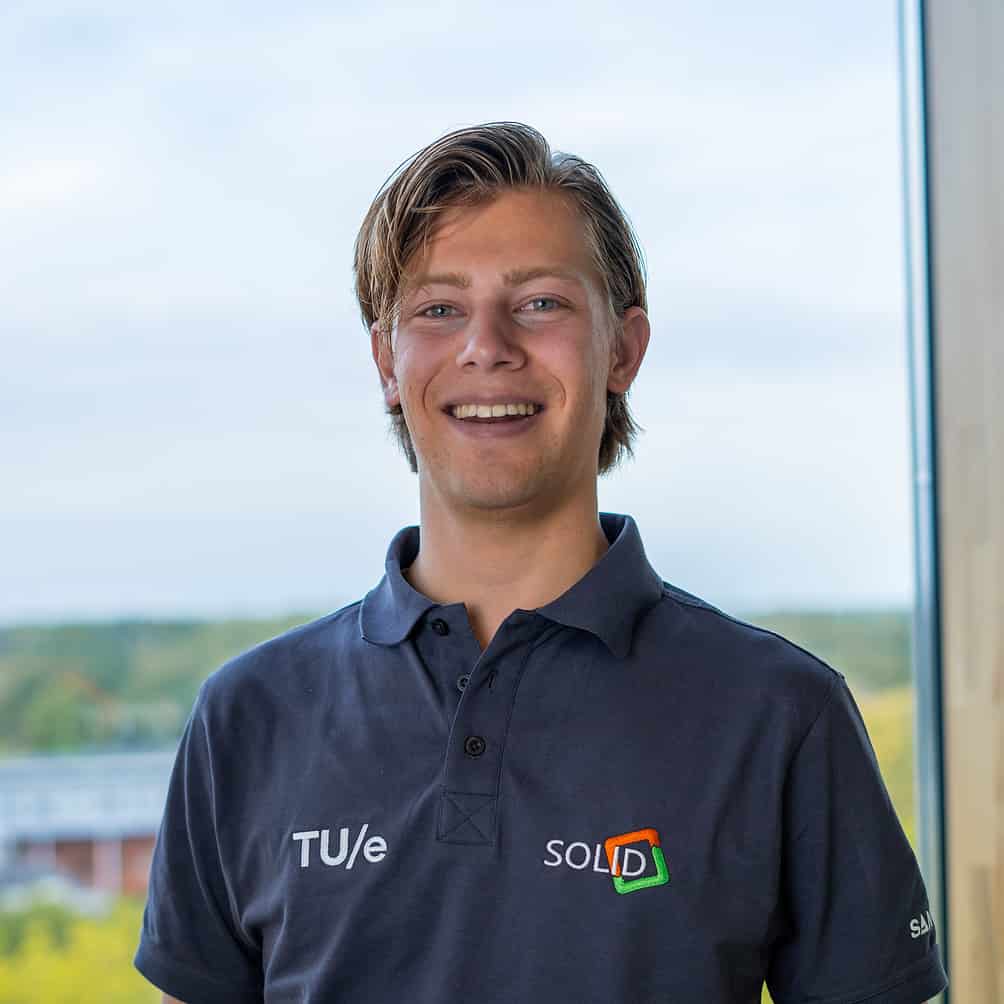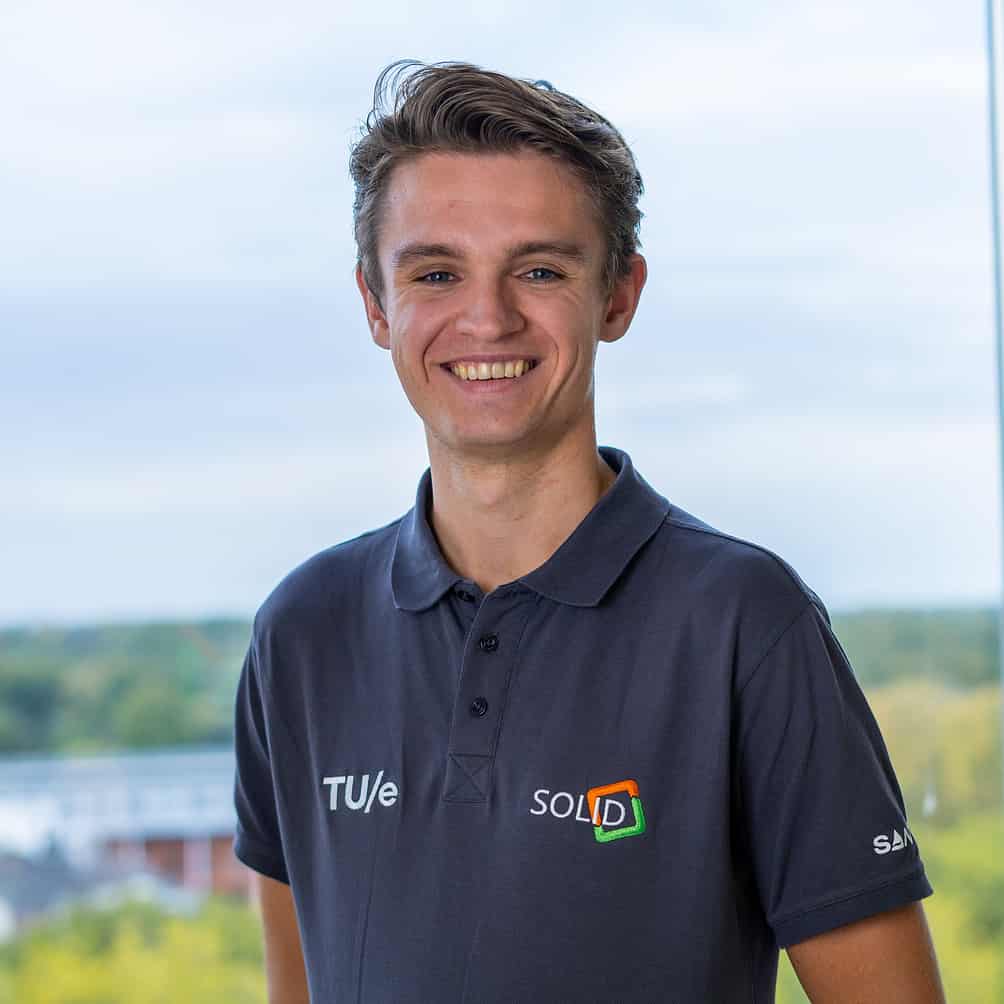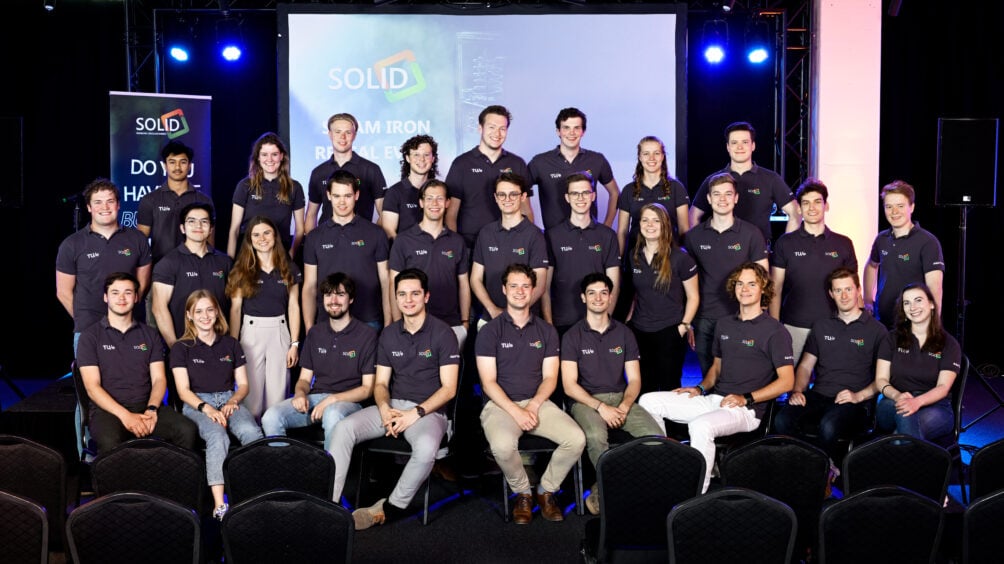
We can quickly call it the most significant energy transition challenge: the storage and transportation of green energy. The Netherlands is fully committed to wind and solar power, but the electricity grid needs to be fixed. With numerous projects, European consortia, and some eight hundred million in subsidies, the central government is setting its sights on green hydrogen. But the question applies there, too: how will we arrange storage and distribution?
A decentralized solution
“There is already an infrastructure of pipelines, but that network is geared to the five large industrial clusters. They are responsible for thirty percent of industrial CO2 emissions, and the sixth cluster – ‘the rest’ – is responsible for the other seventy percent. All these companies are separate from the hydrogen network. Therefore, their ability to become more sustainable is more limited,” explains Timme ter Horst, business manager at student team SOLID.
Therefore, the team has developed a decentralized solution independent of this infrastructure. That solution comes in the guise of SIR One (Steam Iron Reactor), which SOLID has built with the help of project partners RIFT, TU/e, DNV, and Metalot and subsidy provider Metropool Regio Eindhoven. The reactor was made based on a hydrogen storage technique using iron, and SIR One can store one kilogram of hydrogen and requires twenty kilograms of iron to do so.


‘Why hasn’t this been on the market yet?’
“With iron, you can store hydrogen very compactly. The raw material has a high energy density and can store up to three times more hydrogen per volume than if you store hydrogen under high pressure. This is now the most common method,” Max Winkel clarified. He took a break from his master’s in Applied Physics and Nuclear Fusion this academic year to work as a team manager at SOLID.
Storing hydrogen in iron works as follows. Reacting hydrogen with iron oxide – rust in the vernacular – creates two products: iron and water. Here, iron acts as a storage medium. Then, to supply hydrogen from it, SOLID adds steam to the iron. This, in turn, results in hydrogen and iron oxide. The result is a cycle in which iron functions as sustainable hydrogen storage. “The goal is that the iron we put into the reactor can go through such a cycle at least twenty times,” he said. Moreover, iron is the most abundant element on earth and has fewer safety restrictions than hydrogen,” Winkel said. This combination makes it a low-cost alternative for large-scale hydrogen storage and distribution.
When Winkel joined the team, he thought the technology sounded relatively simple. “I didn’t understand why the concept wasn’t on the market long ago. Now I know better (laughs). As a physicist, I’m never concerned with the bolt I must attach to two parts. I discovered this year how difficult it is to get a technology ready for the market.”


Successful predecessors
The team is building on the technology developed by their predecessors. In 2020, the student team and the Metal Power consortium developed the first industrial iron powder incinerator. That resulted in the spin-off RIFT, which raised two million in investment late last year. Ter Horst: “This concept is now succesful outside SOLID; we made a conscious choice to do something different.”
Ter Horst believes that their predecessors are really successful, and that does bring certain expectations. As a business manager, he looks at where this very young technology fits among the energy giants. Or, as he calls it, “scouting different markets for hydrogen.”
Applications: heavy industry and seasonal storage
“The market around hydrogen is very hyped, but what will we really use it for? Our answer to that is: making the heavy industry more sustainable. That means the sectors that need very high temperatures for their production processes. There are six industrial clusters, five of which are connected to the infrastructure of pipelines for gas. The sixth cluster is not a cluster, but ‘the rest’. Consider producers of ceramics, glass, and paper. They do not have direct access to the infrastructure for hydrogen. That’s where we want to focus because our solution is decentralized.”
In addition, seasonal hydrogen storage is also an application area SOLID is focusing on. Winkel: “Last summer, the Netherlands had a lot of electricity surplus. At those times, you want to produce hydrogen and store it to use later. Salt caverns in the north of the Netherlands are the most commonly mentioned alternative, but the disadvantage is that you can’t move them. And so, again, you need that infrastructure. Our solution can be applied anywhere you want.”
That leaves an important question: where will SOLID get all that iron from? “We are considering whether we can use waste iron in our reactor. Besides: iron that we can no longer use, is still very pure and can easily be used for the steel industry,” Winkel said. SOLID is part of the KWR Watercycle Research Institute‘s “Hydrogen in a Circular Economy ” project.
Not an excellent race car or drone
Although SIR One has barely been launched, its successors are already known. SIR Two should be able to store five hundred kilowatt hours of hydrogen; in 2027, SOLID wants to launch SIR Three in the port of Rotterdam. Ter Horst: “We are not developing a cool race car or drone, but a technology that has the potential to be scaled up and can make an impact.”

